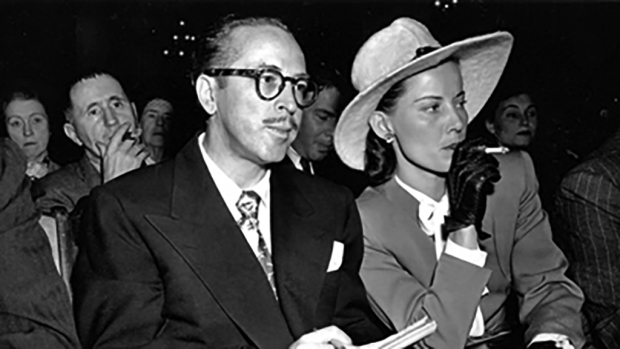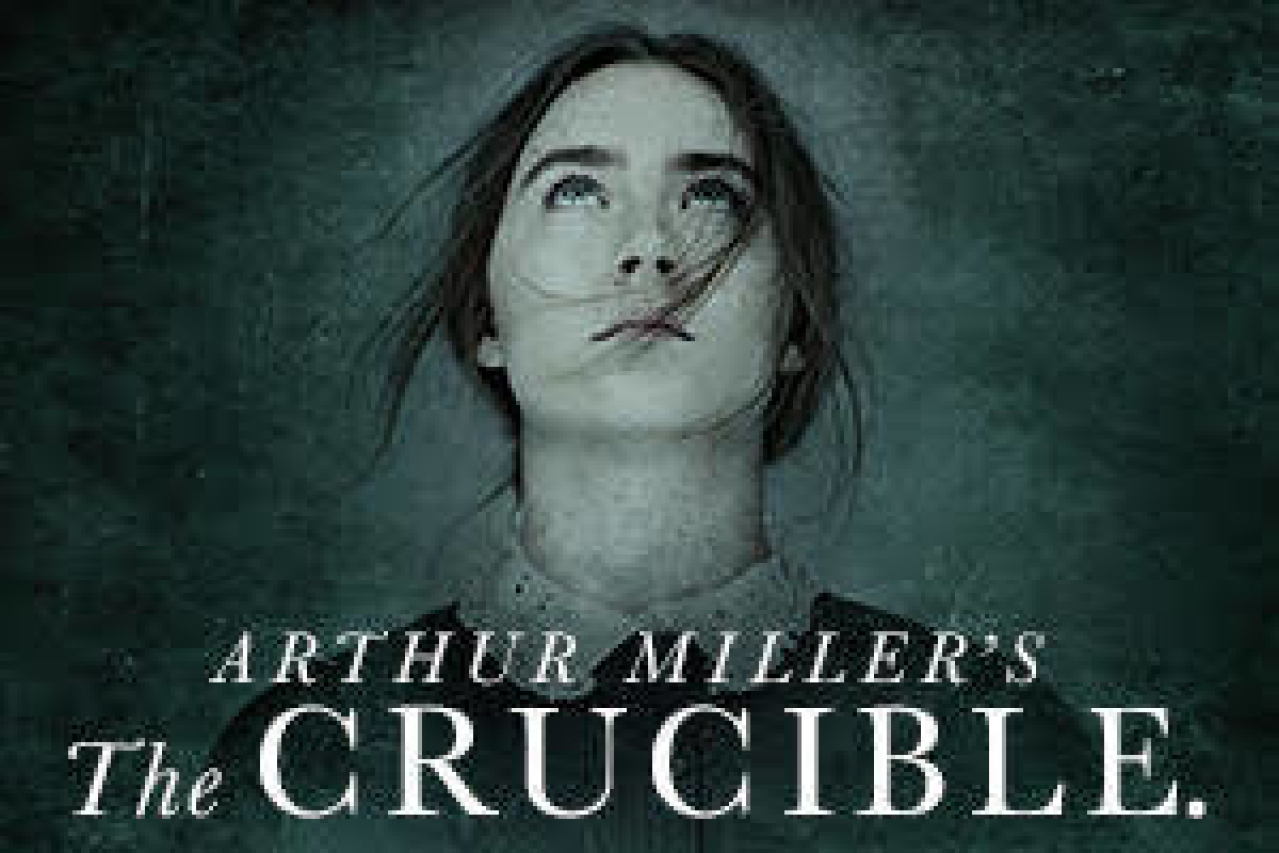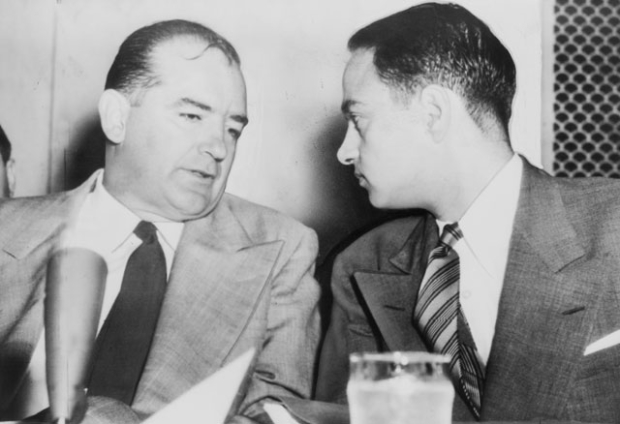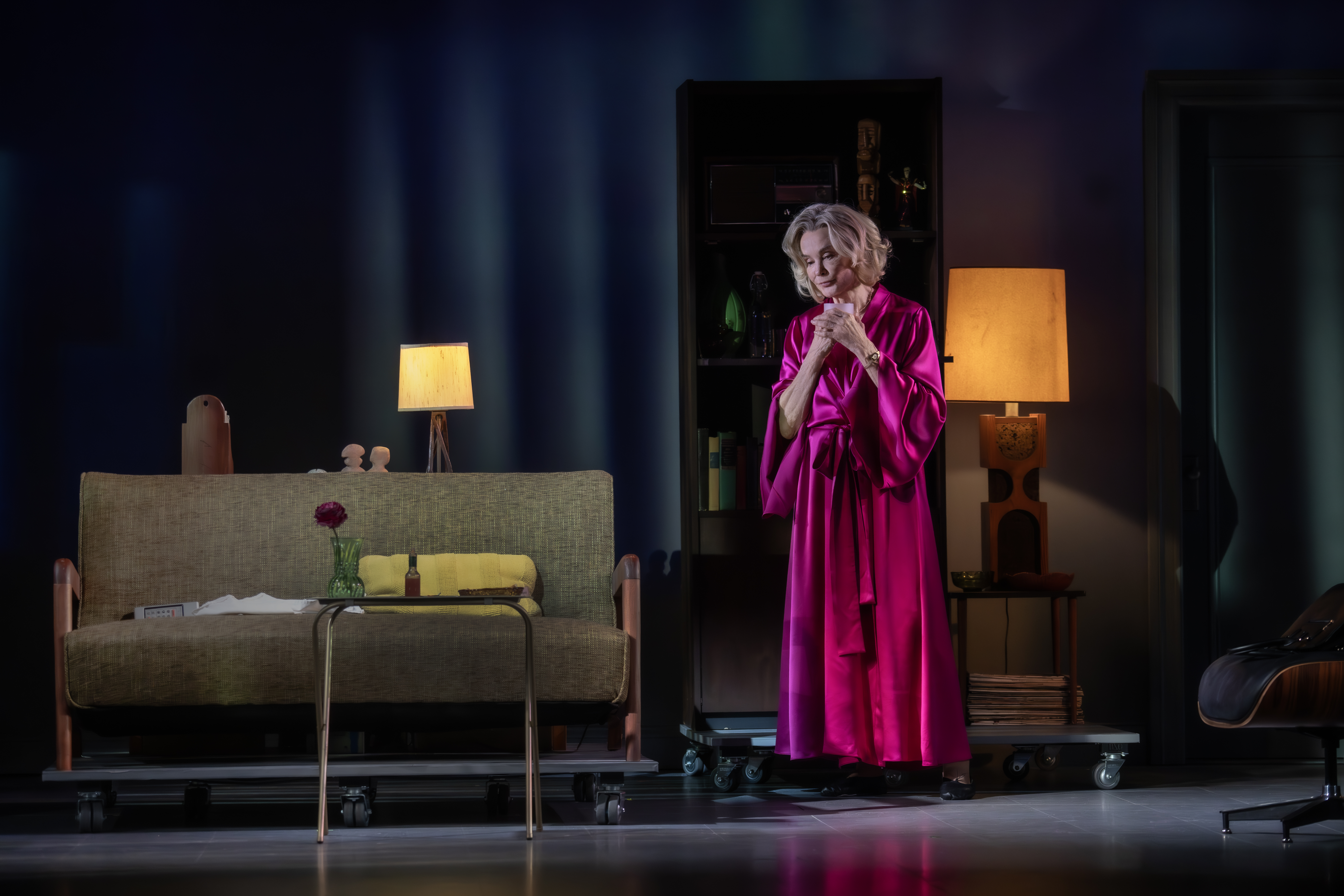The Crucible's Historical Melting Pot (Part II)
This is part II of Michael Feingold's latest "Thinking About Theater" column. Click here to read part I.

To what extent were the people accused of Communism in postwar America's red scare actually dangerous or treasonous subversives? In most cases, probably not at all. A lot of them — and I have encountered a great many of them over the years — were liberal-minded, educated people, seriously concerned about solving America's social problems. If you had invited them to help you overthrow the government by force or violence, most, I imagine, would have laughed in your face. Certainly it is hard to conceive of the well-paid screenwriters who were stigmatized as the "Hollywood Ten," or the gentle-souled Group Theatre actors who suffered from the blacklist, hefting Kalashnikovs on the barricades, though it is very easy to picture them helping Southern blacks register to vote, or circulating petitions for the recall of some particularly odious right-wing officeholder. The Communist ideal was their superstition, like the pinch of salt tossed over a Salem housewife's left shoulder — a wish to placate spirits that might be dangerous if enraged.
Certainly, there were "real" Communists — Soviet secret agents and their suppliers of information — at work in classified industries. We had terminated the war with Japan by exploding the atomic bomb, and had elected not to share its secrets with our Soviet former allies, whose subjugation of Eastern Europe as a set of satellite states had demonstrated imperial ambitions equivalent to Hitler's. While leftists debated the issue of shared atomic power, believers in key places simply smuggled out sufficient data for the USSR to build its own nuclear weapons.
The Rosenberg case, a pivotal event of the era, embodied America's fear. In retrospect, two points convey the extent to which that fear was overwrought: First, the information that Julius Rosenberg gave the Soviets, supplied by his brother-in-law David Greenglass (who lately received a backhanded tribute in Richard Greenberg's play Our Mother's Brief Affair), was of secondary importance at best; the more vital information came from the German refugee physicist Klaus Fuchs, who was arrested in England and later allowed to escape to East Germany. (The British, it turned out, had many more highly placed Soviet agents than we did.) Second, Ethel Rosenberg, who had nothing whatever to do with the matter, was executed along with her husband. Hence, even where actual espionage is concerned, Miller's analogy holds: People were falsely accused and pointlessly executed. (Boris V. Brokhovich, a nuclear engineer who had worked at the Soviets' plutonium extraction plant, told the New York Times in 1989 that the information was useless: "You sat the Rosenbergs in the electric chair for nothing.")

And only a minuscule number of those stigmatized as "Communists" had any connection to classified information, or were in any position to commit treason even if they had wished to. The CPUSA had been a publicly recognized political organization, its candidates appearing on ballots and sometimes getting elected, until 1949, when the government began systematically prosecuting CPUSA leaders under the Smith Act of 1940, which had legalized the deportation of those "advocating the overthrow of the government by force or violence." The trials were raucous and highly publicized; the convictions were largely overturned several years later by the Supreme Court, which sensibly drew a distinction between advocating an idea "for incitement" and exploring it as a concept.
In the interim, however, thousands of Americans — many of them, including Miller, in the arts — were identified in hearings by the House Un-American Activities Committee (HUAC) as Communists. It didn't matter if they actually were Party members (a nebulous concept anyway), nor if they had left the Party, as many did, in reaction to the Soviets' postwar engulfing of Eastern Europe. Nor did it matter that the Party had once been a legal political entity. If someone named them as having been seen at a Communist meeting or rally, or saw their signature on a Communist-sponsored petition, that was it. Either they would admit their party affiliation in testimony before HUAC — which entailed naming the names of their fellow Communists, and which most of them understandably viewed as an invasion of their constitutional rights — or they would be deemed "unfriendly" witnesses.
The consequences could be dire: job loss, shunning by neighbors and former friends, blacklisting within the profession, stalking by the FBI, and a constant, nerve-racking stress that aggravated everything else. At least one actor's suicide — Philip Loeb's — and half a dozen too-early deaths can be blamed on the blacklist. The bitterness it spawned, the traumatic rifts between those who named names and those who wouldn't, still echo today, three generations later.

The blacklist is built into the history of The Crucible itself. Miller's two previous plays, gigantic successes, had been directed by Elia Kazan. Kazan named names — shortly thereafter signing a multi-picture Hollywood contract. The Crucible was directed by Jed Harris. Miller and Kazan had been developing a project about longshoremen. Kazan's version became On the Waterfront, with a screenplay by Budd Schulberg (who had also named names); Miller's became A View From the Bridge, directed onstage by Martin Ritt. In Kazan's version, the guy who blows the whistle on the gangsters dominating the waterfront, Terry Malloy (Marlon Brando), is the martyred hero. In Miller's version, the guy who rats on the illegal immigrants, out of sexual jealousy, dies for his own tragic folly. (Yet Miller and Kazan were clearly monitoring each other's work: Richard Davalos made his Broadway debut as Rodolpho in View From the Bridge, fresh from his screen debut in Kazan's East of Eden.)
Miller, already in trouble with Hollywood because the film version of Death of a Salesman had been widely denounced as "anti-business," was blacklisted. The Crucible was filmed as a French-East German coproduction, Les Sorcières de Salem (1957), with Yves Montand and Simone Signoret as the Proctors; the screenplay, by Jean-Paul Sartre, tilts the play considerably toward a Communist interpretation. A View From the Bridge, though filmed in English by Sidney Lumet, was a French-Italian coproduction. Raf Vallone plays Eddie, with Maureen Stapleton and Carol Lawrence as his wife and stepdaughter; the two Italian "illegals" are the French actors Raymond Pellegrin and Jean Sorel.
This painful chunk of our cultural history reaffirms what both the blacklist and the Salem witch trials were about: obedience. Both had started as a fear-driven reaction to very real threats from outside — Salem lived in constant fear of Indian attacks — and both were channeled into the community's enforced punishment of outliers, dissenters, those who questioned established principles. HUAC's congressmen, like Salem's Putnams, seized the occasion for personal aggrandizement. In Miller's autobiography, Timebends, he describes an offer, relayed the night before he was to testify, from HUAC's then chairman, Pennsylvania congressman Francis Walter, who was facing a tough reelection fight: Walter was willing to quash the subpoena and waive the hearing, if he could be photographed shaking hands with Miller's then fiancée, Marilyn Monroe. Miller declined the offer, which would have spared him considerable inconvenience. The Devil was loose in 1956 Washington, as in 1692 Salem; his emissaries were the witch-hunters, not those they accused.
Michael Feingold's next two-part "Thinking About Theater" column will appear on consecutive Fridays May 20 and 27.
Michael Feingold has twice won the George Jean Nathan Award for Dramatic Criticism, most recently in 2015 for his "Thinking About Theater" columns on TheaterMania, and has twice been a finalist for the Pulitzer Prize in Criticism. He serves as chairman of the Obie Awards and has also worked as a playwright, translator, and dramaturg.












